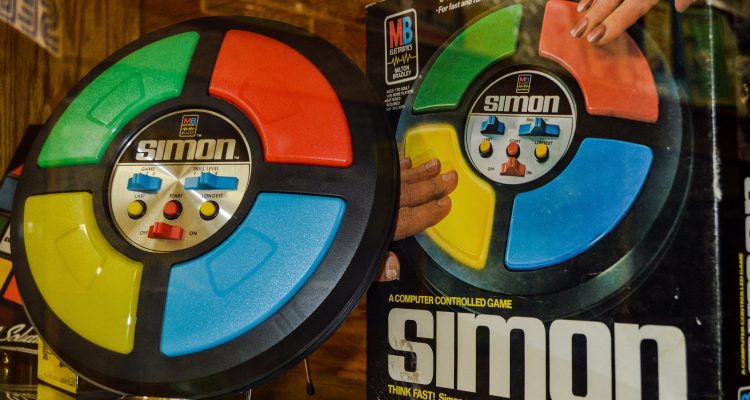That’s right. TOYS!
The red wagon, the Rubik’s Cube, the baby doll, and the Jack in the Box, and there were the Evil Knievel and G.I. Joe action figures, not to mention the board games, Atari and Nintendo and Sega Genesis, Tonka trucks, Etch A Sketch, the pet rock, and the Chia Pet, Hot Wheels, Cabbage Patch dolls, Silly Putty, Play-Doh, the “boom box,” and the erector set.
And let’s not forget the beloved Christmas bicycle and those Barbie dolls.
Toys.
Toys are a worldwide tradition that were first manufactured in ancient times, and they have evolved through the 239-year history of the United States. Wood, cloth and steel toys have been followed by plastic ones, and others filled with the newest technology. Many of the most storied toys can be found in two places in the Wheeling area: the Kruger Street Toy and Train Museum in Elm Grove, and Deluxe Toy and Hobby in Martins Ferry, Ohio.
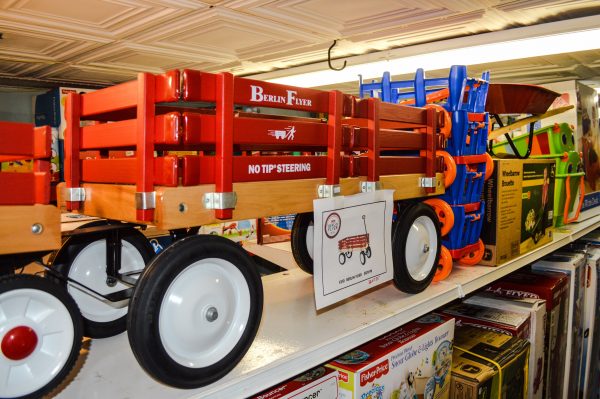
The Miller family, owners of the Kruger Street attraction, has more than 100,000 toys and trains on display on any given day. Mike and Connie Yeso feature as many as 25,000 different items for sale at the Martin’s Ferry store.
“Inside this building there’s nearly a century worth of passion collected, and there are many toys on display that came from Germany when the Miller family came to America, and both of the Millers – the father and the son – have been collecting for most of their lives,” explained Jimmy Schulte, curator at the Toy and Train Museum. “They have traveled to many places to find things that may interest our visitors, but their interests started with trains and everything involved with those model trains.
“The younger kids are always more interested in the toys that they can actually touch and play with, and the older visitors, I think, love to remember all of the toys that they used to play with when they were children. I don’t think a person can walk through here and not come up with a memory from when they were a kid. That’s what this museum is really about,” he continued. “I always tell people that we have been here for 16 years, and that if they decide to come, they will definitely have a good time. That’s what it is designed for, and I doubt anyone who comes here leaves disappointed because what they remember from being a child is here to see.”
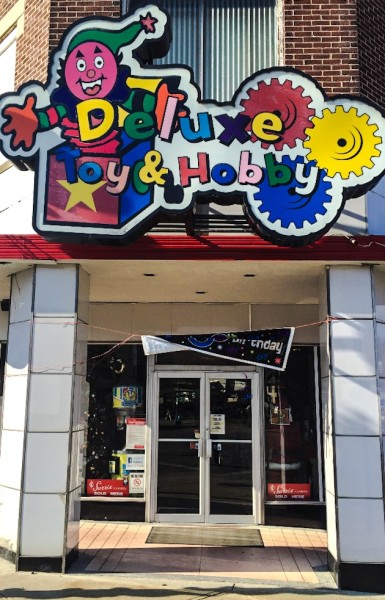
The Yeso family is celebrating the toy store’s 60th anniversary this Christmas season and its 38th year at the same location. Inside, local consumers can discover more than 25,000 different toys, models, and trains on three jam-packed floors.
“We opened up this location one week after we were married, and when we first moved into this building, we were worried that we might have to rent out the upper floors, but now we could probably fill another building of this size,” Mike Yeso said. “I think it’s impressive for any business to operate for 60 years in today’s business environment. There’s a lot of competition out there and a lot of different variables, and that’s why we are very thankful for every customer that walks through our doors. We are lucky to attract customers from all over the world.
“It’s a lot of fun for us to see the people who have moved away because many of them pay us a visit when they come back to town for whatever reasons,” he said. “They always tell us that when they come back to Martins Ferry, they have to come back and see their toy store, and that makes us feel as if we’ve been doing something right for a lot of years.”
He admitted it, too. Selling toys for a living is a gig to be giddy about.
“It’s the best job a person could have, really. It’s so heartwarming because we’ve seen several generations grow up. We’ve laughed with our customers, and we’ve cried with our customers when they have lost family members,” Yeso said. “It really is like a big family, and our customers are our friends.”
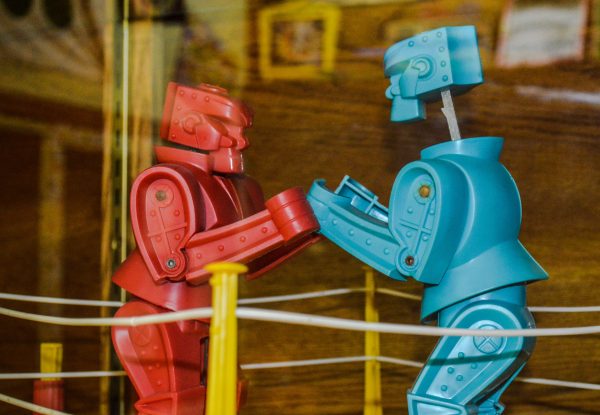
Toys Tell Stories
The number of toys received by children on Christmas has increased over the years, and many say the amount of imagination needed to play with most gifts these days has far declined since toys like the technology-free cowboys and Indians sets sold during the 1950s.
“In the very beginning, toys took a lot more of imagination than what they do today. Today, toys seem to be more scripted than they used to be,” Schulte said. “Legos are a great example of that evolution. When they first came out in the late 1940s, a child received a collection of blocks, and the kid figured it out from there, but that’s not true today for the most part.
“Now they are very scripted as far as what a child can build from most of the sets that are sold today,” he continued. “But some things have not changed, and one of those things is the fact that kids seem to have way more energy than adults do, so there are still plenty of toys that are strictly outdoor toys like the Big Wheel.”
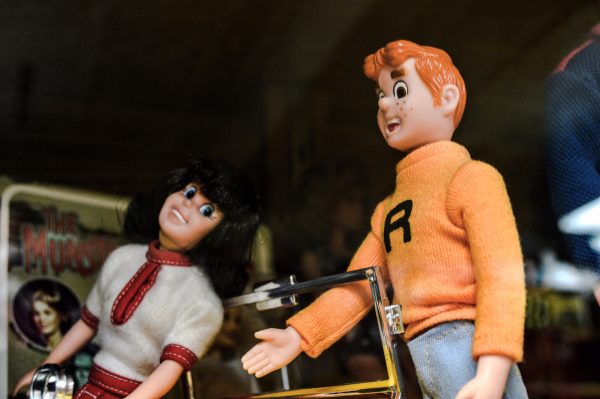
Although they are a big seller at Deluxe Toy, Yeso agrees with Schulte when it comes to Legos.
“It’s a huge category for us, but the only thing I don’t like about Legos these days is the fact that they have dumbed them down too much for me,” he admitted. “A lot of the Lego sets build only the one thing, and that’s it, but thankfully there are some sets that are basic tubs of the bricks. Most people, though, buy the themed sets, and I suppose Lego had to do what they had to do to survive.
“Nonetheless, it’s a very popular item and we devoted quite a bit of space in the store to the Legos,” he said. “And we do our best to stay up to date with everything that’s coming next. In fact, we are close to placing our order with Legos for 2016 already.
“And the baby doll has changed a lot through the years, but I believe a basic baby is probably still the best and most popular. We have several lines of dolls, including the basic ones and the dolls that make the sounds, but we have both, the old-school dolls and the more modern dolls that have been rolling out since the 1970s.”
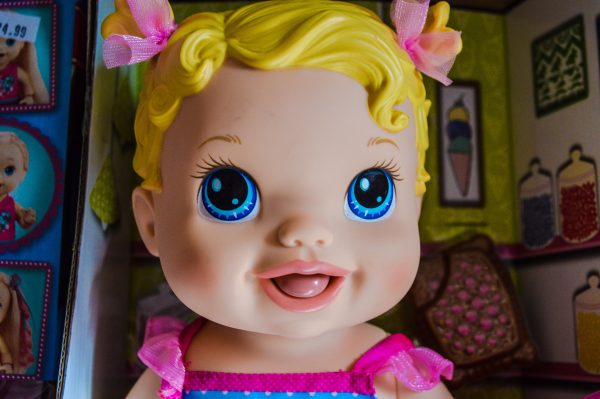
Our toy memories also reveal a lot about our age and the place where we reside, and the Upper Ohio Valley has a rich history with one of the greatest toy manufacturers in American history.
“The Marx Toy Company was a pioneer in the toy business. They were way ahead of their time,” Yeso explained. “They produced so many cool things, and I wish they were still around. That Louis Marx was a smart businessman. That company’s demise wasn’t even close to his fault; that I can tell you.
“Louis Marx is one toy inventor that I miss because he got an idea, and he just went with it. He believed that if he liked that other people would like it, and that’s actually how we run this toy store,” he said. “Some might not believe that’s the best way to go about business, but it’s worked for us.”
Our toys, too, tell the tale of our country’s evolution.
“Toys really tell us about what has happened throughout our history in our country and around the world,” Schulte said. “The stick has been a toy, and so has the Slinky, and we’ve also seen a move away from the wooden and metal toys to plastic toys and then to electronics.
“Cell phones are even considered toys to some people, and we all know how we use those on a daily basis,” he said. “It’s amazing to me how the toy has traveled in my lifetime alone, but knowing now so much history, I can tell you that one thing hasn’t changed, and that’s entertainment.”
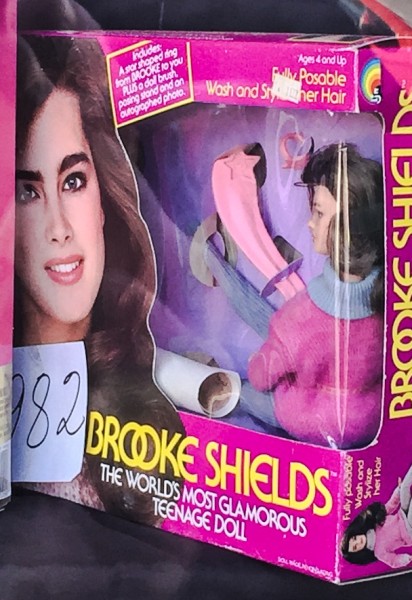
After nearly four decades of selling toys, Yeso has witnessed the bells and whistles on toys increase far more than he ever expected.
“I believe the evolution of toys parallels what happens in the world as far as technology is concerned,” Yeso said. “In the 1940s through the 1960s the kids would make their own sounds for the toys, but then in the 1970s and 1980s the companies started to add the sound chips to the toys.
“Now we have toys that can talk to you through Bluetooth technology, for goodness sakes. It’s not always for the best, but some of the technology is pretty cool,” he continued. “For example there is this sphere that’s called, ‘Sphero,’ and it’s a robotic remote-control ball that you can control with your cell phone. It can change colors, and it can swim through water. It’s pretty neat technology.
“But I still, at the end of the end, like the old technology. I like the Lincoln Logs, the tinker toys, the erector sets, the toys that are hands-on. I believe the kids will get the most benefit from the toys that they can grasp in their hands and learn something with. I don’t think they are learning anything from all of the video games. In my opinion, I think they are wasting their time with the video games.”
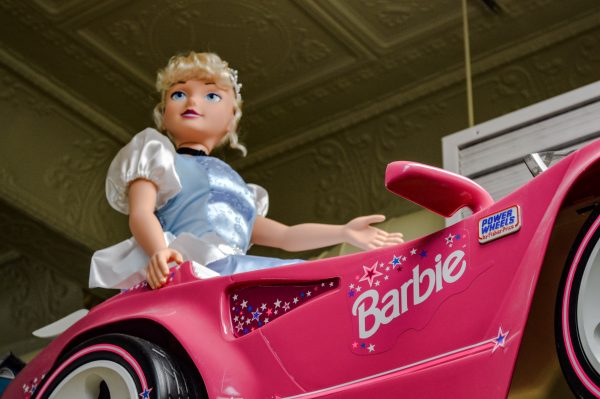
Barbie and the Big Wheel
She’s been a dentist, a doctor, a veterinarian, and a first responder, but also a paratrooper, a princess, a cowgirl, a cat burglar, and a NASCAR driver, too.
She is Barbie, now 56 years old and still introduced in more than 40 different ways each year by the Mattel Corporation.
“One of the most famous and most popular toys of all is the Barbie doll. She’s always shown us what women have been doing in their time,” the Toy and Train Museum’s curator said. “She’s been a house mom to now being a computer engineer. She’s displayed the transitions that have taken place. Throughout history we have really instilled our values and our culture in our toys, and the Barbie doll may be the perfect example of that.”
“She’s gone through a lot of changes since the product was first introduced,” Yeso said. “She has been everything from a chef to a teacher to a pilot to an astronaut. She is still a very popular item for Christmas, maybe not as popular as when the product was in its heyday, and that’s because kids are more sophisticated these days.
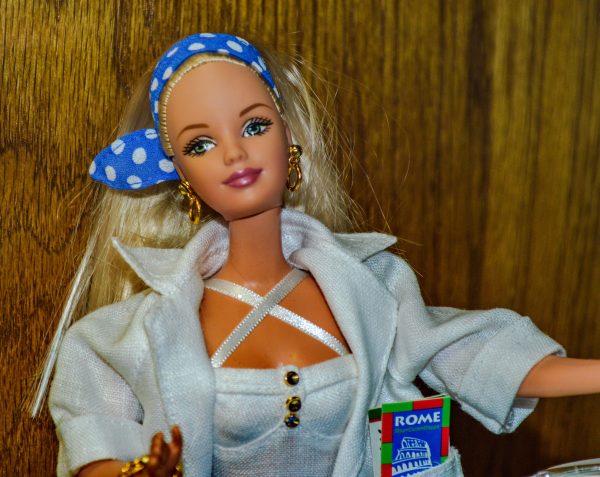
“The Barbie we sell today is more realistic than it was when it was first introduced, and that’s because people complained to Mattel that her figure was very disproportionate. Mattel listened, and they made the changes,” he reported. “And it’s for the better, in my opinion, because it helps the young girls with body image and things like that.”
Boys who were raised in the Wheeling area during the 1970s often recall the Big Wheel, a plastic tricycle with a safer center of gravity, that was manufactured by Marx Toys in Glen Dale, W.Va.
“The Big Wheel is definitely a historical piece that has been around for many generations since it was introduced in the late 1960s, and it’s still popular today,” Schulte said. “Kids still get a Big Wheel when they are little, but it was really revolutionary at the time it came out because it was the first real option to the tricycle.
“Parents started to favor the Big Wheel because the kids couldn’t tip over accidentally like they could on an actual tricycle, and the fact that they are still produced today speaks volumes of the impact it has had,” he continued. “A younger kid could ride it when they couldn’t yet ride a tricycle, and the older kids could go faster on it than they could tricycle.”
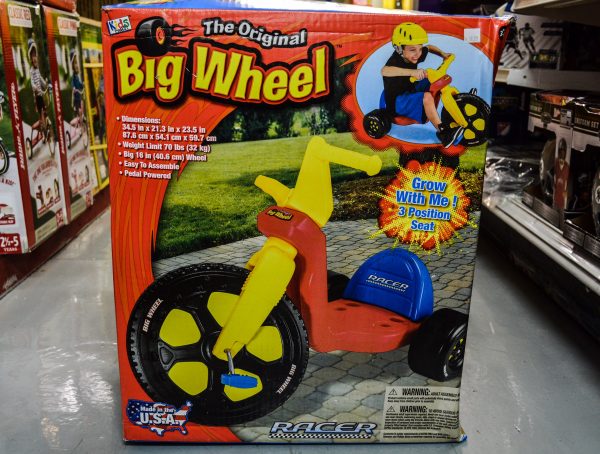
Yeso continues to stock Big Wheels at Deluxe Toy and that’s because people still buy them.
“They most definitely do still buy the Big Wheel although the rights to making the Big Wheel have been sold and bought several times since Marx Toys went out of business (in 1978), and right now it’s being made by Jakks Pacific, and it’s still being made in America.
“The Big Wheel is still a perennial seller each and every year,” he continued. “That’s because people remember them from they were children, and they want their kids or their grandkids to have the same fun they had with it.”
Marx Toy, Schulte said, produced much more than the Big Wheel in Glen Dale. The Marshall County factory, in fact, was integral to all plastic products.
“Two of the really hot items that were manufactured for the most part in Glen Dale were the Big Wheel and the Green Machine, but another big item was the ‘Cindy’ doll. That doll, for a time, was a direct competitor with the ‘Barbie’ doll,” Schulte reported. “Hundreds of people worked there, and the factory really pumped out the products, and we have most of them here at the museum and not just because one of their factories was in Glen Dale.
But what is the most popular toy of all time? One would have to ask a toy store owner such a question, right?
“In numbers I would have to guess Barbie is the all-time most popular toy every created,” Yeso said. “I don’t think there is a toy company that has sold more of one product than Mattel has sold of Barbie over the years. I know we have devoted a lot of space to the Barbie, and over the years and there are usually 40 or 50 popular Barbies every year since 1958, so Mattel has really worked that product, and it’s continued to sell very well year-in and year-out.”
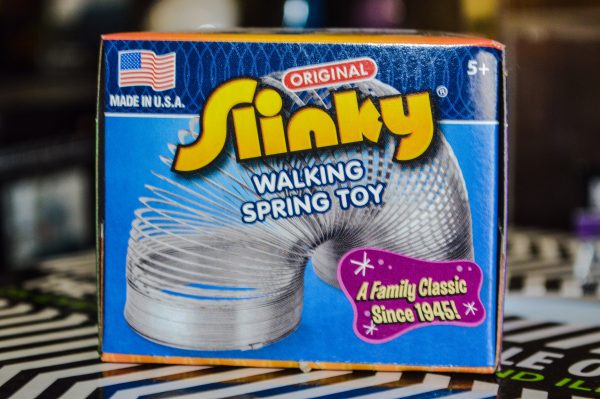
Today’s Toys; Tomorrow’s Play
Some have stuck. Young girls still love their baby dolls, and young boys get a kick out of trucks and Slinkys and stuff like that. Technology, though, has changed the game, along with bottom lines, letters to Santa, and how mothers and fathers shop for Santa Claus.
The Yeso family, however, refuses to ignore the classics.
“We don’t do sales online, but what we do is showcase our store because there are a lot of people who aren’t aware of the caliber of toys that exist today. There are a lot of people who are not aware that there are better toys out there,” Yeso said. “We hope that people will come in so they can see that there are better alternatives than what they see in the chain stores or all over the Internet.
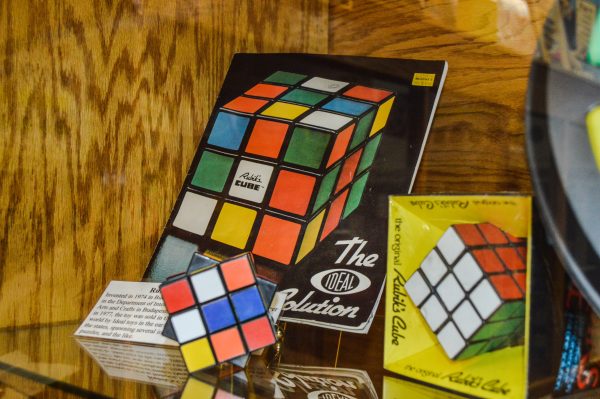
“A lot of kids only know what they see on the shelves at the big-box stores, but when they come in here, their eyes are opened up because we carry arts and science toys; we have the hobbies; and we also have a lot of toys from companies that do not sell to the chain stores,” he explained. “So many of the toys are unique products that you will not be able to find anywhere else.
“I believe more people are surprised to see that we have the old tin, wind-up Jack in the Boxes, and they love that we have the Lincoln Logs, erector sets, Etch A Sketch, and Slinkys. I call them staple items,” Yeso said. “A good toy store needs to have those things, and that’s why we have so many of those great old classic toys.”
It’s not as if Yeso strays away from the technology-driven items or the top-trending ones eithers. This year for example, it’s not the Barbie doll that’s ching-chinging the cash register the most.
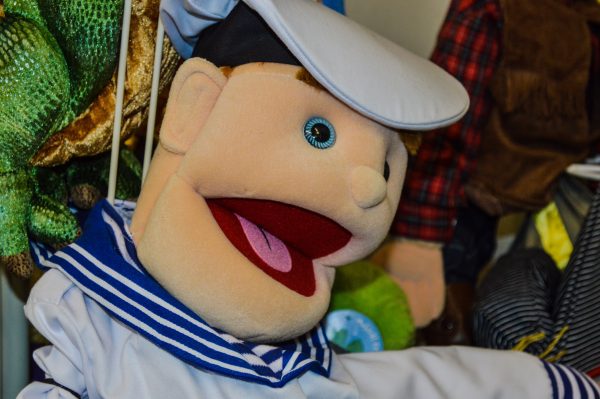
“One category that has really done well is the better-quality remote control cars,” Yeso said. “And I’m talking about the ones that can go 30 to 60 miles per hour. But these aren’t the throw-away kinds. These are hobby quality, and every part in them can be fixed, and people really appreciate that.
“There has been a lot of technology added to the trains, too. They have more sounds and more lights than ever before, and now a lot of the sets are operated with a wireless remote rather than by the older transformer controls,” he continued. “You can blow the horn, ring the bell, and there are many noises now that the trains come with these days. And the tracks are much more convenient these days, too.”
There are the staples, those toys that have stuck around far longer than the spinning top, those little Army guys, and the Bionic Man action figure. What the future holds, though, is more of an unknown now than ever before in the toy industry.
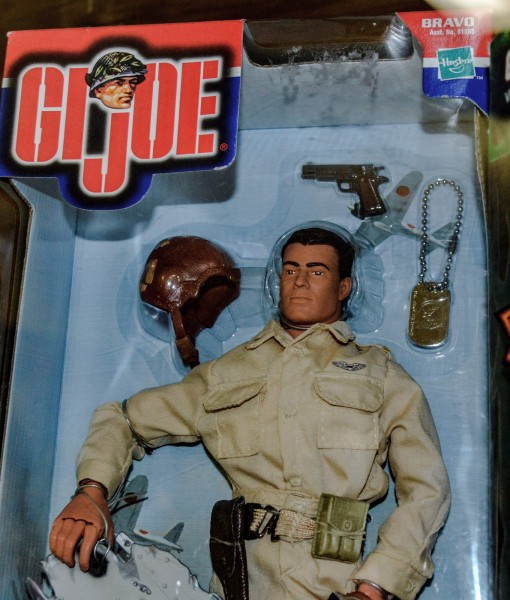
“Cars and trucks, train sets, dolls, and some of the board games have remained very popular throughout the years, and there has been a retro trend that has made the toys from the 1970s popular again,” Schulte said. “I think in the near future toys will be getting more sophisticated and more complex. I think we’ll see toys be more electronically driven, but I still see a lot of the basic toys continuing to survive as they always have.
“And honestly, as much as we see technology driving things forward, I think we’ll always see a demand for dolls and stuffed animals and the Big Wheel,” he added. “Those basic toys have always supplied a comfort for both kids and adults of all ages. But toys have come and gone, and we have seen many of them come back for whatever reasons.
“We’re always going to have our toys, but what they will be in five or 10 years from now, we’ll just have to wait and see.”
(Photos by Steve Novotney)


